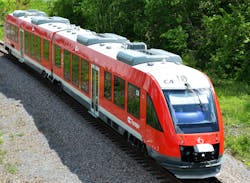Many transit organizations are seeing improvements in cost, visibility, safety and customer satisfaction by implementing an integrated planning solution to keep plans and schedules in sync across all areas of their operations.
For agencies considering shifting toward an integrated solution, a return on investment will likely be realized within a short time frame. However, there are some key implementation best practices I would recommend that you consider to make you implementation a success.
1. Take stock of what you have
When integrating data from existing systems, such as payroll or asset management, transit organizations face two significant hurdles:
- Determining which data are needed
- Evaluating its quality
Think about the systems you currently use.
Which will you choose to ‘retire’ during the transition to planning platform, and which will you maintain? For those that you will maintain, think about their abilities to import and export data.
What are their limitations? Importing and merging data from disparate systems often exposes discrepancies. You may discover that you need to perform data cleansing in order to get the most out of your new system.
2. Keep security front and center
While you are working to improve communication between systems, security data should be a major consideration. You’ll need to be aware of what data is being shared between systems and employees to ensure that your customers’ and employees’ right to privacy is being protected.
As a way of mitigating these concerns, I recommend having separate server environments as a best practice. The number of separate environments would depend on your organization’s methodologies and budget. It’s possible that your planning solution vendor could host the development and test environments for your project. Another precaution to take for security is to make sure any test data is prevented from actually getting into production.
Also make sure that your organization has an information security policy that describes all the processes that are in place to ensure that data is being handled securely.
3. Break down silos in your operations
One barrier to implementing a true integrated planning environment is the organizational, and sometimes even physical, siloes that exist between planning units in your transit operations department. Each planning unit may use different tools or systems, or use different processes to achieve the same task. In addition, numerous handoffs are needed when plans are created in order to arrive at a finished product. Because these decisions are not made in lock-step, without access to real-time information, plans are often poor reflections of reality. Likewise, on the day of operations, this siloed organization results in delayed response to disruptions such as mechanical, track, or crew issues.
It is essential for the planning teams that work with your new system to have strong support from executives who understand the organization as a whole. Bring the teams together to participate in the design, acceptance and testing of the new solution. An important demonstration of the organization’s commitment to change is the hiring and promoting of key users. Employees should recognize that executives are involved throughout the transition. Not forgetting proper training and change management, which must be factored into any implementation timeline.
4. Work closely with labor unions and organizations
Labor unions and organizations are crucial stakeholders in any major changes affecting your crew and planners. Involving leaders from these groups right from the start is an important step to avoid any challenges down the line. It is important to make any changes to your planning processes slowly and to be as transparent as possible. Involve the invested parties early in your implementation process, making sure that they are included when critical functionalities are discussed.
You might consider giving your unions and labor organizations the opportunity to review and request changes for components of the solution. Encourage their participation, and in the process educate them on the specifics of your new planning technology. Some agencies will work with their chosen vendor to plan on a longer implementation time in order to allow time for union approval. Involving labor leaders early will guard against the shock of sudden change, and will make sure the union won’t feel that its agreement or position is being threatened in any way.
Some of these tips may be particularly challenging for your organization and require more time and focus than anticipated. The time and effort invested in the transition will surely match the benefit of flexibility and adaptability achieved as a result of your integrated scheduling solution.
Daniel G. Crown is business unit director at Quintiq North America.




